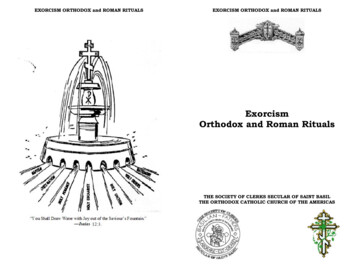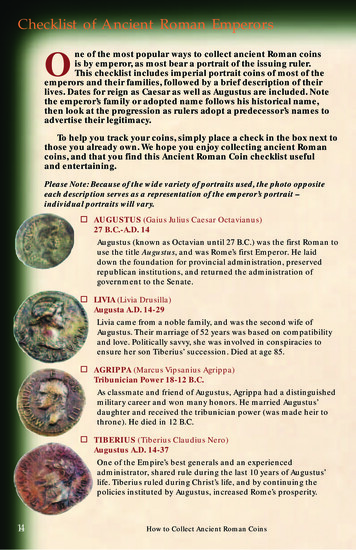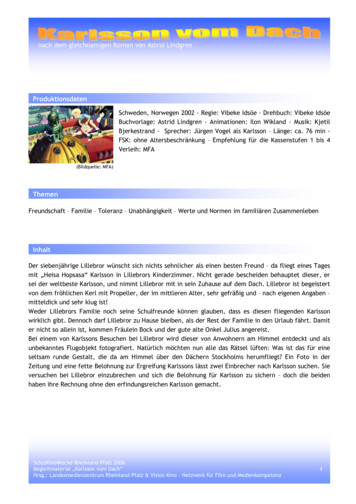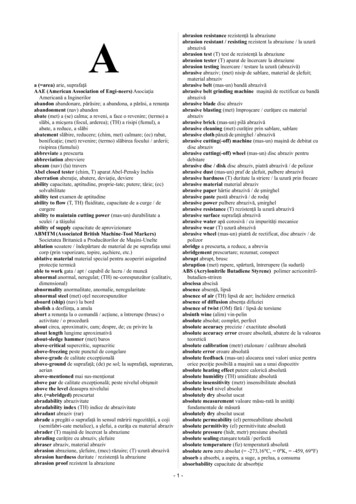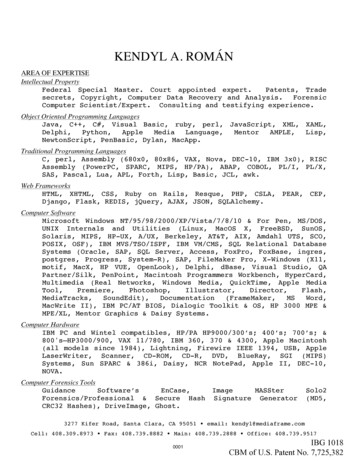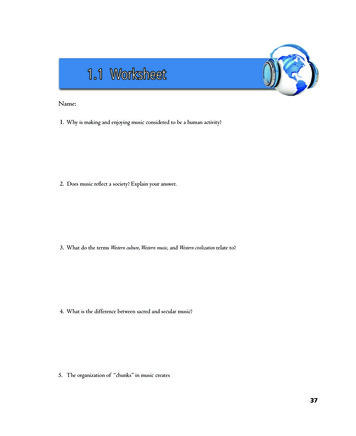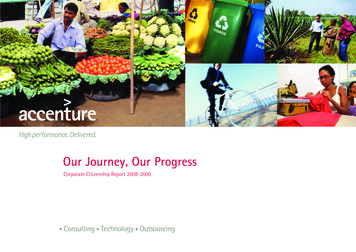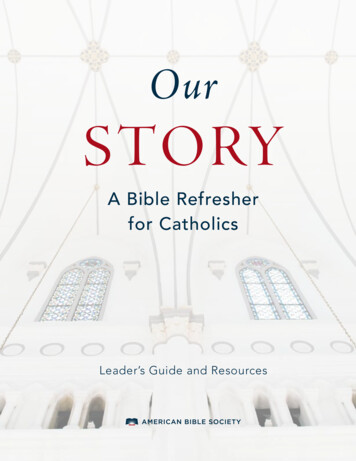
Transcription
OurSTORYA Bible Refresherfor CatholicsLeader’s Guide and Resources
2018 American Bible Society. All rights reserved.Permission granted to make copies of this resource for personal and small group use.American Bible Society Catholic Initiatives101 North Independence Mall East FL8, Philadelphia, PA stries2
CONTE NTSLeader’s Guide5The Program7Outline of the Videos8For Parish Planners8How to Lead a Group in Our Story11Questions for Personal Study and Group Discussion12Additional HandoutsQuestions for Part 1: The Old Testament13Old Testament Segment 1: The Pentateuch15Old Testament Segment 2: The Historical Books17Old Testament Segment 3: The Wisdom and Prophetic BooksQuestions for Part 2: The New Testament19New Testament Segment 1: The Gospels21New Testament Segment 2: Acts of the Apostles23New Testament Segment 3: The Letters3
Questions for Part 3: The Catholic Approach to the Bible25Catholic Approach Segment 1:The Mass and Its Biblical Background27Catholic Approach Segment 2:Basic Catholic Principles that Guide Bible Study29Catholic Approach Segment 3:The Bible as the Source of Catholic DoctrineAdditional Handouts32Resource A: Bible Overview45Resource B: Biblical Phrases in the Mass46Resource C: The Catholic View of Scripture48Resource D: Lectio Divina4
LEADER’S GUIDEThe ProgramOur Story: A Bible Refresher for Catholics is not meant to be a comprehensiveoverview of the Bible nor a substantial Catholic Bible Study. It is just meant toreacquaint interested and curious adults with the general makeup of the Bible andthe Catholic approach to it. It is hoped that this experience will empower participantsto look inside the Scriptures for themselves. That’s why it comes with suggestions forfurther exploration and study in this downloadable document. You can view the full setof Our Story resources by visiting abs.us/biblerefresher.The content of Our Story is twofold: A basic video introduction to the Bible followedby a few short exercises in which participants can engage with the Scriptures basedon what interested them most during the video. These exercises can be used byindividuals as they view the videos online, or by parish groups that might watch thevideos together and discuss the questions.Our Story has three video parts of approximately 15 minutes each, focusing on OldTestament, New Testament, and particular ways that Catholics interact with the Bible.Each video, in turn, consists of three short segments of about five minutes each. Aftereach five-minute segment, participants are invited to go to their Bibles and privatelycomplete one Scripture engagement exercise of their own choosing.The viewing group can then decide to further explore the group discussionquestion. These individual exercises and discussion questions can all be found in thisresource packet.5
The SpeakersMark Hart, known nationally and internationally as “the Bible Geek,” is a graduate ofthe University of Notre Dame, a SiriusXM Radio host, a much sought-after speaker, andthe author of more than twenty books, including his latest, Unleashing the Power ofScripture: A Guide for Catholics (Word Among Us Press, 2017).Kevin Saunders is the founder of the Arizona Bible Class, where he teaches a sixyear course through the Bible. More than 1000 Catholic adults have graduatedfrom this program. With a master’s degree in theology and New Testament fromNotre Dame University, he has done doctoral work in New Testament Studies at theCatholic University of America, and spent a year studying at the famed Ecole Bibliquein Jerusalem.6
Outline of the VideosFind the videos at: abs.us/biblerefresherVideo Part 1: The Old Testament (Mark Hart) Segment 1: The Pentateuch Segment 2: The Historical Books Segment 3. The Wisdom and Prophetic BooksVideo Part 2: The New Testament (Mark Hart) Segment 1: The Gospels Segment 2: The Acts of the Apostles Segment 3. The Epistles and RevelationVideo Part 3: The Catholic Approach to the Bible (Kevin Saunders) Segment 1: The Bible in the Mass Segment 2: Interpretation of the Bible Segment 3: The Bible in Catholic DoctrineVideo Part 4 (Optional): Lectio Divina Training Video, Part 1 (Fr. Dempsey Acosta)7
For Parish PlannersOur Story can be scheduled in several ways. Parts 1, 2, and 3 might be offered as: Three consecutive evenings as a Lenten “mission” experience or as a summer AdultVacation Bible School. Each evening session can be 60–90 minutes. One session per week for three weeks. All together as a 3-hour Saturday or Sunday “Scripture Seminar.” As an individual self-study done in one’s own place at one’s own pace via a link onyour parish website and bulletin.NOTE: Our Story also lends itself to an optional “Part 4” if you are interested: a videointroduction to Lectio Divina, our ancient Catholic method of praying with the Bible thatPope Francis has encouraged all Catholics to consider. This 25-minute Lectio Divinavideo is led by theologian and Lectio Divina scholar Fr. Dempsey Acosta from theUniversity of St. Thomas in Houston, and can be downloaded at abs.us/lectiotrainingen.If you use this as a fourth session, simply run the entire video and then facilitate a simpleLectio Divina prayer experience using the instructions on Resource D: the “LectioDivina” worksheet.How to Lead a Group in Our StoryBecause this experience is intentionally designed to be an easy onramp into the Bible,Our Story does not require an experienced Bible educator to lead the discussion. Infact, we urge leaders to focus on facilitating, not teaching. These sessions are moreabout making the acquaintance of the Scriptures rather than dishing out details. It’simportant for participants to find the joy of reading the passages for themselves andsharing questions or comments in a safe setting. (We do, however, encourage parishesto follow up Our Story with their own Catholic Bible study programs, where parishionerscan go deeper.)Our Story can be offered as three 75–90 minute sessions. Each of the three 15-minutevideos contains three five-minute segments. Simply follow each five-minute segment8
with the 7–10 minutes of quiet personal study exercises and an additional five minutesof group discussion, if you wish.It is not necessary to have small group leaders within a large group setting.However, if you do choose to use small group leaders, give them the same task as thelarge group leader: Pose the Group Discussion Question, invite responses, make sureno one dominates, and keep the discussion focused on the question.PRIOR TO EACH SESSION Remind everyone to bring a Bible or download a Bible app. Have extra Bibles onhand. Make sure everyone has access to the downloadable exercises—either by printinghandouts or emailing links. Check the video setup. Make sure the video has been properly downloaded and isready to be shown on the equipment in the meeting space. Prepare yourself by viewing the videos and reading through the exercises.STARTING A SESSION Welcome everyone. Offer an opening prayer that includes a reading from Scripture or the Lord’s Prayer. Explain how each session will unfold: video viewing interwoven with personal studyof the Bible passage of their choosing (and with optional group discussion).THE SESSION PLAN Show the first video segment (about 5 minutes). Stop and distribute the “Questions for Personal Study and Group Discussion”worksheet that pertains to this segment. The worksheet is found later in this guide. Give participants 7–10 minutes to privately look up biblical events, themes, orpersons of their choosing. Ask any of the group discussion questions you like. Allow another 7–10 minutesfor discussion.9
Repeat with the second video segment, followed by the personal study exercisesand optional group discussion found in this guide. You can access a digital version ofthese resources by visiting abs.us/biblerefresher. Repeat the same process with the third video segment, followed by the personalstudy exercises, and group discussion, if you wish.CLOSING A SESSION Distribute any additional material you may have downloaded and printed, such asResource A: the Bible Overview, which can be found in this packet. 10Remind everyone of the time of the next meeting.
Questions for Personal Studyand Group DiscussionAfter watching a segment of the video, pause it and allow time for everyone toprivately complete one of the Scripture engagement exercises before moving to thenext video segment.Tip: If your group chooses to engage with Our Story on a shared screen, you can easilyflip back and forth between the videos and the questions and exercises. Simply clickthe, “Download Leader’s Guide” button beneath the video, which opens the guide on anew tab on your browser. Then click back and forth between the videos and this guide.There are also questions for Group Discussion – which can come after the privateexercise.Remember the process:1. video segment2. personal study exercise3. optional group questions4. further exercises for after the session, for individual study, or if the group hasextra time.Please note that these selections highlight just a few of the many important persons,events, and God-messages found in each section of the Scriptures.11
Additional HandoutsHere are four additional handouts that can enrich the experience. Resource A (for Part 2 segment 3): Bible Overview (Quick takes on all 73 books ofthe Bible)12 Resource B (for Part 3 segment 1): Biblical Phrases in the Mass Resource C (for Part 3 segment 2): The Catholic View of Scripture Resource D: (optional Part 4): Lectio Divina (Guided Lectio on Matthew 4:1–11)
QUESTIONS FOR PART 1:THE OLD TESTAME NTOld Testament Segment 1: The PentateuchThese writings, also known as the Books of Moses, combine stories and laws tochronicle the formation of the nation of Israel.QUESTIONS FOR PERSONAL STUDYExplore one of these readings before moving on to the next video segment. Adam and Eve. Read chapters 2 and 3 of Genesis. What’s the main message of this famous story for you? What part of these two chapters do you connect with the most? The Ten Commandments and the Law. Read Deuteronomy 5:1—6:9. The TenCommandments were first given to Moses at Mt. Sinai just after the Israelites’ dramaticExodus from Egypt. But about forty years later, as their wilderness wanderings nearedan end, Moses reminded them of those commandments. How do you respond to the Ten Commandments? Do you find them rather easy tofollow or difficult?In Deuteronomy 6:4–9, Moses also mentioned one more command, which the Jewishpeople call the Great Commandment or the Shema (meaning “hear”). Still today, theJewish people often place the words of the Shema on their door and touch it as areminder before leaving the house every day. How fully are God’s words woven into your life? How do you “hear” God as you gothrough your day?13
GROUP DISCUSSION QUESTIONS Your Reactions. Based on what you’ve just read: What surprises you, pleases you, or interests you? What is being revealed about (1) God; (2) humans; (3) the relationship between Godand humanity? What, if anything, has become a little bit clearer for you? What, if anything,challenges you?WHEN YOU HAVE MORE TIME The Joseph Saga. Read Genesis 37–45 (but, to keep the focus on Joseph, youcan skip chapter 38). This extended story touches on many life experiences like usingyour gifts, being a dreamer, family feuds, betrayal, second chances, faith in God, andforgiveness. A great read when you get time. Moses and the Liberation of the Jews. Read the first 15 chapters of Exodus. TheJoseph story got the Israelites down to Egypt, where they later became slaves. Here’show they got out. You’ll find details of Moses and the burning bush, the epic strugglewith Pharaoh, the plagues, and the crossing of the Red Sea. Read it all for yourself.Take special note of the Passover, which prefigures the power of the blood of anotherperfect Lamb to come. And notice the very first thing the Jewish people did once theywere free. 14How do you celebrate the amazing things God has done for you?
Old Testament Segment 2: The Historical BooksThis section of the Bible chronicles the history of Israel after their Exodus from slavery,their wandering in the wilderness, and their eventual occupation of the Promised Landof Canaan.QUESTIONS FOR PERSONAL STUDYExplore one of these readings before moving on to the next video segment. Jericho. Read Joshua 6:1–25. Joshua, the successor to Moses, leads the Israelitestoward the establishment of their own land and nation. The battle of Jericho islegendary. How many days did this battle go on? Do you see any connection between thelength of the battle and the story of Creation, or even the sacramental life of theChurch? Notice who leads the march. What do you think is the significance of this?In verses 22–25 we find an unlikely hero—Rahab the prostitute. Rewind to chapter 2 toget her story, then page forward to the New Testament (Matthew 1:5) and see who laterturns out to have her as an ancestor. David and Goliath. Read chapter 17 of 1 Samuel. Study the subtle and symbolicmessages in this famous event. Notice what David declines to use in battle and what he chooses to rely on. If Goliath is a symbol of the fear that prevents us from living as God intends, whatwould you say is your “Goliath”? As David picked five stones for his slingshot, what tools might you choose to rely onin overcoming your fears? (Pick five if you like!)15
GROUP DISCUSSION QUESTIONS Discerning a Calling. Together, read 1 Samuel 3. As a boy, Samuel heard God’s callto become a prophet, but he wasn’t sure of it at first. How can a person in modern times discern the call of God? What has been your experience and understanding of a vocation or calling? What can get in the way of discerning a calling?WHEN YOU HAVE MORE TIME Deborah. Read Judges 4 and 5 and meet the only woman to serve as a judge inIsrael. Deborah was a sage, warrior,
Our Story: A Bible Refresher for Catholics is not meant to be a comprehensive overview of the Bible nor a substantial Catholic Bible Study. It is just meant to reacquaint interested and curious adults with the general makeup of the Bible and the Catholic approach to it. It is hoped that this experience will empower participants
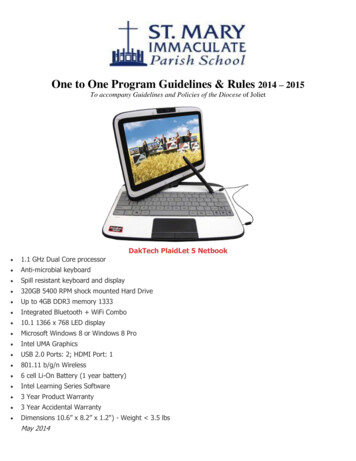
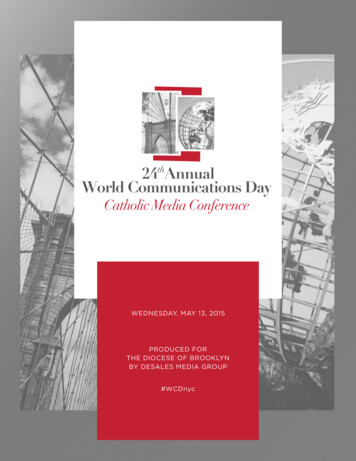
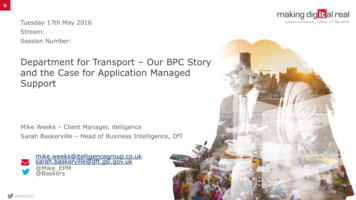
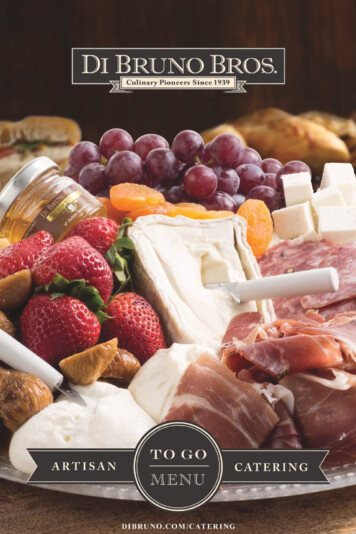
![Roman Statkowski [1859-1925] Piano Music](/img/3/25129booklet.jpg)
